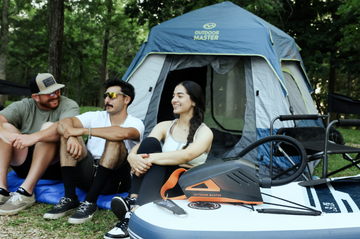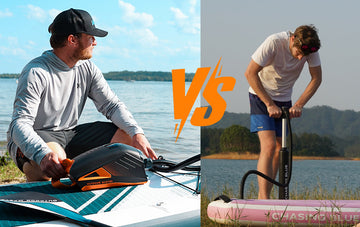ロードバイクのポジションに関する究極ガイド:ライディングの技術をマスターする

目次
導入バイクのフィット感とライディングポジションを理解する
理想的なロードバイクのポジションに必要な要素
ロードバイクを最適なポジションにセッティングする方法
姿勢と体幹の安定性の重要性
よくある問題や不快感への対処
長距離ライドと耐久サイクリングのヒント
ロードバイクのポジションを改善するためのトレーニングとエクササイズ
時間の経過に伴うポジションの監視と調整
結論
1. はじめに
ロードバイクで完璧なポジションを実現するための包括的なガイドへようこそ。この記事では、理想的なロードバイクポジションに不可欠な要素、最適なパフォーマンスを引き出すためのバイクのセッティング方法、そして姿勢と体幹の安定性の重要性について説明します。
また、よくある問題や不快感についても解説し、長距離ライドやエンデュランスサイクリングのヒント、そしてロードバイクのポジションを改善するためのトレーニングエクササイズもご紹介します。このガイドを読み終える頃には、ロードバイクでのポジションを最適化し、快適性、効率性、そしてパフォーマンスを最大限に高める方法をしっかりと理解できるようになります。
2. バイクのフィット感とライディングポジションを理解する
バイクフィットとは、個々の体型やライディングスタイルに合わせてバイクを調整するプロセスです。適切にフィットしたバイクは、パワー伝達、効率、快適性を向上させ、怪我のリスクを軽減します。適切なバイクフィットの重要な要素は以下のとおりです。
- フレームサイズ
- サドルの高さと角度
- ハンドルバーの高さとリーチ
- ペダルの位置とクリートの位置合わせ
ライディングポジションとは、自転車に乗っているときに体がどのように位置しているかを指します。ロードサイクリングには主に3つのライディングポジションがあります。
- 直立姿勢(カジュアルライディングやレクリエーションライディング用)
- 持久力ポジション(長距離サイクリング用)
- 空力ポジション(レースやタイムトライアル用)
3. 理想的なロードバイクのポジションに必要な要素
理想的なロードバイクのポジションは次のようになります。
- 空気抵抗を最小限に抑える: より低く、より空気力学的な位置は、抗力を減らし、速度を上げるのに役立ちます。
- パワー出力を最適化: 適切な位置に置くことで、脚からペダルへのパワーの伝達が効率化されます。
- 快適さを最大化: 快適な姿勢は、筋肉の緊張、疲労、不快感を防ぎます。
- 怪我のリスクを軽減: 正しい位置合わせと姿勢は、反復ストレスによる怪我や不快感を防ぐのに役立ちます。
4. ロードバイクを最適なポジションにセッティングする方法
ロードバイクで可能な限り最適なポジションを実現するには、次の手順に従ってください。
- サドルの高さを調整する: かかとをペダルに乗せた状態で、ペダルが最も低い位置にあるときに足がほぼ完全に伸びている必要があります。
- サドルの角度を設定します。サドルは水平またはわずかに下向きに傾けます。
- 正しいリーチを決定する: 手をフードに置いたときに肘がわずかに曲がるように、ステムの長さとハンドルバーの高さを調整します。
- ハンドルバーの幅を確認してください。ハンドルバーは肩とほぼ同じ幅である必要があります。
- クリートの位置を決める: 靴のクリートを足の指の付け根に合わせ、ペダルを踏むときに膝がまっすぐになるようにします。
5. 姿勢と体幹の安定性の重要性
ロードバイクで最適なポジションを得るには、正しい姿勢と体幹の安定性を維持することが不可欠です。良い姿勢は、効率的なパワー伝達、疲労軽減、そして怪我のリスクを最小限に抑えます。ロードバイクで正しい姿勢を保つためのヒントをご紹介します。
- 体幹を鍛える: 腹筋を鍛えて上半身を支え、安定させます。
- 握りを緩める: 手の疲労を防ぎ、より良いコントロールを維持するために、ハンドルバーを軽く握ります。
- 肘を曲げる: 衝撃を吸収し、より良いハンドリングを実現するために、肘を少し曲げた状態に保ちます。
- 背中をまっすぐに保ちます。背中を過度に反らせたり丸めたりしないようにして、背骨をまっすぐに保ちます。
- 前方を見る: 頭を上げて目を前に向け、地形や障害物の今後の変化を予測します。
6. よくある問題や不快感への対処
ロードバイクに乗ると、体の様々な部位に不快感や痛みが生じることがあります。よくある症状とその対処法をご紹介します。
- 腰痛: サドルの高さとリーチが適切に調整されていることを確認し、乗車中に体幹の筋肉を動かします。
- 首と肩の緊張: ハンドルバーの握りを緩め、肘を少し曲げた状態を保ち、必要に応じてハンドルバーの高さを調整します。
- 手のしびれ: 頻繁に手の位置を変え、パッド付きの手袋を使用し、ハンドルを強く握りすぎないようにします。
- 膝の痛み: クリートの位置合わせ、サドルの高さを確認し、ペダルを踏むときに膝がまっすぐになっていることを確認します。
- サドルの不快感: さまざまなサドルの形状を試し、パッド付きのサイクリング ショーツを使用し、必要に応じてサドルの角度を調整します。
7. 長距離ライドと持久力サイクリングのヒント
長距離走行や持久力サイクリング中にロードバイク上で最適な姿勢を維持するには、次のヒントを考慮してください。
- 水分補給を続ける: 乗車中は適切な水分補給ができるよう、十分な水または電解質飲料を携帯してください。
- 身体に燃料を補給する: エネルギー レベルを維持するために、乗車中に消化しやすい炭水化物とタンパク質を摂取します。
- 休憩を取る: 定期的に休憩を取り、筋肉をストレッチして体を回復させましょう。
- 自分のペースを守る: エネルギーを節約し、筋肉の疲労を防ぐために、安定した管理可能なペースを維持します。
- 姿勢を調整する: 筋肉の緊張や不快感を防ぐために、手と体の位置を時々変えてください。
8. ロードバイクのポジションを改善するためのトレーニングとエクササイズ
特定のエクササイズやトレーニングテクニックを取り入れることで、ロードバイクのポジション、快適性、そしてパフォーマンスを向上させることができます。以下の提案を参考にしてください。
- 体幹強化エクササイズ: プランク、ブリッジ、腹筋エクササイズは、バイクに乗るときの体幹の安定性と姿勢を改善するのに役立ちます。
- 柔軟性と可動性のトレーニング: ストレッチとヨガを取り入れて柔軟性を高め、筋肉の緊張を軽減します。
- バイク特有の筋力トレーニング: スクワット、ランジ、デッドリフトは、より効率的なパワー伝達のために脚力を鍛えるのに役立ちます。
- 高強度インターバルトレーニング (HIIT) : 心血管フィットネスと筋肉の持久力を向上させるために、トレーニング計画に HIIT ワークアウトを取り入れます。
- バランスと安定性のエクササイズ: 片足立ちやバランスボールを使ったエクササイズなどのバランスエクササイズを取り入れて、全体的な安定性と体のコントロールを向上させます。
9. 時間の経過に伴うポジションの監視と調整
フィットネスレベルやライディングの好みが変化するにつれて、ロードバイクのポジションをモニタリングし、それに応じて調整することが重要です。定期的にバイクのフィットチェックを行い、柔軟性、筋力、ライディングの目標の変化に応じて調整することを検討しましょう。
10. 結論
ロードバイクで最適なポジションを得ることは、快適性、効率性、そしてパフォーマンスを最大限に高めるために不可欠です。理想的なロードバイクポジションの重要な要素を理解し、バイクを適切にセッティングし、正しい姿勢と体幹の安定性を維持することで、最高のライディング体験を実現できます。
一般的な問題や不快感に定期的に対処し、対象を絞ったエクササイズやトレーニング手法を取り入れ、時間の経過とともに自分の姿勢を監視および調整することで、ロード サイクリングの取り組みにおいて優れた成果を上げ続けることができます。
よくある質問(FAQ)
-
ロードバイクが自分にぴったりのサイズかどうかはどうすればわかりますか?
ロードバイクのサイズが適切かどうかを確認するには、足を肩幅に広げてバイクの上に立ちます。股下とトップチューブの間に約2.5cmの余裕があるはずです。さらに、ハンドルバーに快適に手が届き、肘を軽く曲げられることを確認してください。
-
どのくらいの頻度で自転車のフィット感をチェックする必要がありますか?
少なくとも年に 1 回、または柔軟性、筋力、乗り方の好みに大きな変化があった場合に、バイクのフィット感を評価することをお勧めします。
-
プロにバイクフィッティングしてもらう価値はあるでしょうか?
プロによるバイクフィッティングは、快適性、効率性、パフォーマンスに影響を与える可能性のある問題を特定し、修正するのに役立つため、あらゆるレベルのライダーにとって有益です。特に、ライディング中に不快感や痛みを感じている方や、潜在能力を最大限に発揮したい競技サイクリストにとって、特に効果的です。
-
バイクフィットセッション中は何を着たらいいですか?
普段お使いのサイクリングウェアとシューズを着用してください。これらはバイクに乗る際の姿勢に影響を与える可能性があります。そうすることで、バイクフィットアセスメントがあなたの普段のライディングコンディションを正確に反映したものになります。
-
長距離走行中にロードバイクのポジションを維持するにはどうすればいいですか?
ロングライド中にロードバイクのポジションを維持するには、体幹の筋肉を鍛え、正しい姿勢を維持し、定期的に手と体の位置を変えることで筋肉の緊張や不快感を防ぐことが重要です。水分補給をしっかり行い、体に十分な栄養を補給し、定期的に休憩を取り、回復を促しましょう。






